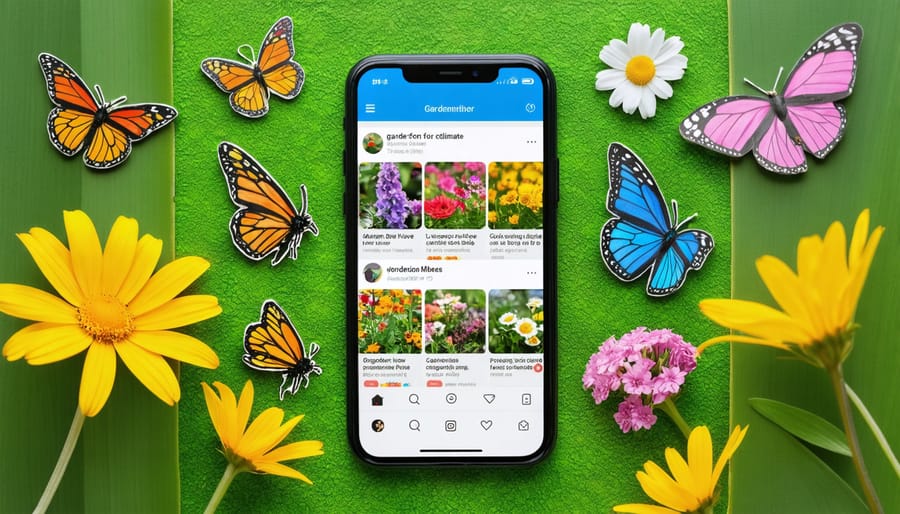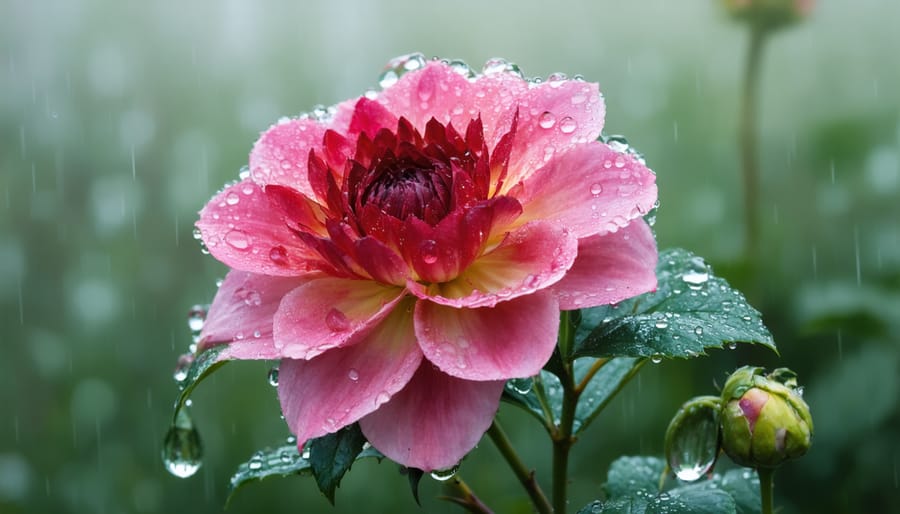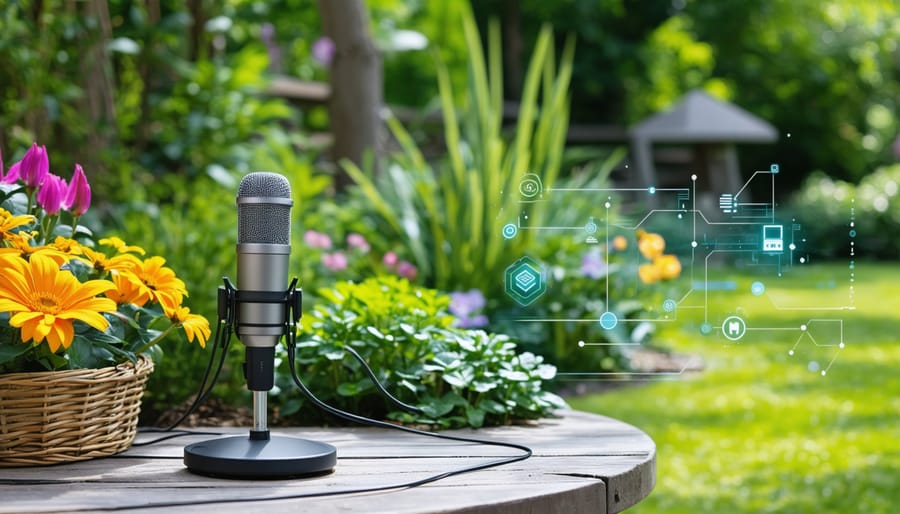Transform your outdoor space into a tranquil sanctuary with a cascading garden waterfall, one of the most enchanting garden features you can create. The gentle sound of flowing water instantly elevates any landscape, creating a natural focal point that attracts wildlife and soothes the senses. Whether nestled among rocks in a cozy corner or integrated into a grand landscape design, a well-planned waterfall brings movement, depth, and life to your garden. From selecting the perfect location based on natural sight lines to incorporating native plants that thrive in moist environments, designing your garden waterfall combines artistic vision with practical engineering. Modern pump systems and eco-friendly materials make it easier than ever to maintain these stunning water features while keeping energy costs surprisingly affordable.
Planning Your Garden Waterfall
Choosing the Perfect Location
Selecting the perfect spot for your garden waterfall is crucial to create a peaceful garden space that delights both eyes and ears. Start by considering natural sight lines from your favorite outdoor seating areas and frequently used pathways. The waterfall should be visible from these vantage points while still feeling like an organic part of your landscape.
Take note of your garden’s natural slope, as this can significantly reduce construction work and create a more authentic look. If possible, position your waterfall where it can catch morning or afternoon sunlight, creating stunning light effects on the moving water. However, avoid placing it in full sun all day, as this can lead to excessive water evaporation and algae growth.
Consider proximity to power sources for your pump, and ensure the location allows for easy maintenance access. Be mindful of neighboring properties – while the sound of flowing water is soothing, you’ll want to maintain a respectful distance from property lines. The size of your space will also influence placement; smaller gardens might benefit from a waterfall positioned in a corner, while larger spaces can accommodate more central locations.
Sizing Your Waterfall
When planning your garden waterfall, size matters more than you might think. A good rule of thumb is to match the waterfall’s dimensions to your garden’s scale. For small urban gardens, a waterfall height of 2-3 feet creates a pleasant ambiance without overwhelming the space. Medium-sized gardens can accommodate falls of 3-5 feet, while larger landscapes might support features up to 8 feet or more.
Consider the width as well – typically, a waterfall should be about 1/3 wider than its height for a natural look. The depth of your pond basin should be at least 18 inches to support healthy water circulation and potential fish life.
Remember that bigger isn’t always better. A modest-sized waterfall can create just as much impact as a larger one when properly positioned. Focus on achieving a balanced flow rate – aim for about 1 gallon per minute per inch of waterfall width for that perfect, soothing sound that isn’t too loud or too quiet.
Design Styles and Materials
Garden waterfalls come in various styles to suit different outdoor spaces and personal preferences. Natural cascading waterfalls mimic the look of mountain streams, featuring multiple levels of rocks and gentle water flow. Contemporary designs often incorporate sleek materials like polished granite or stainless steel for a modern aesthetic. Pondless waterfalls are perfect for smaller gardens, as they recirculate water without requiring a pond.
Popular materials for waterfall construction include natural stone, such as slate, limestone, or river rock, which create an authentic look. Artificial rocks made from glass fiber reinforced concrete (GFRC) offer a lightweight alternative while maintaining a realistic appearance. For eco-conscious gardeners, recycled materials like repurposed stone or salvaged architectural elements can add unique character.
The choice of liner material is crucial, with options including flexible rubber liners, rigid preformed shells, or concrete. Each material affects both the installation process and long-term maintenance requirements. Consider combining different textures and materials to create visual interest and enhance the overall impact of your water feature.

Essential Components and Installation
Core Components
Creating long-lasting garden features like waterfalls requires the right components working together harmoniously. Here’s what you’ll need for your garden waterfall project:
A reliable pump serves as the heart of your waterfall, circulating water through the system. Choose one rated for your waterfall’s size and desired flow rate. You’ll also need a basin or reservoir to hold water, typically a heavy-duty plastic container buried at the lowest point of your feature.
For the waterfall structure, you’ll require:
– Waterfall filter box or spillway
– Flexible pond liner (EPDM rubber recommended)
– Underground plumbing and fittings
– Natural or artificial rocks of varying sizes
– Water-safe foam sealant
– Landscape fabric for underlayment
Don’t forget these essential tools:
– Level for proper water flow
– Garden spade and shovel
– Utility knife
– Channel locks or pliers
– Garden hose for testing
For finishing touches, consider:
– LED lighting for evening ambiance
– Aquatic plants for naturalization
– Decorative pebbles and gravel
– Beneficial bacteria for water clarity
Remember to choose materials rated for outdoor use and water exposure. Quality components might cost more initially but will save money and maintenance time in the long run.

Installation Steps
Creating your garden waterfall begins with careful planning and preparation. First, mark out your desired location using spray paint or garden rope, ensuring the area has proper drainage and access to electricity for the pump. Remember to call your utility companies to check for underground lines before digging.
Start by excavating the area, creating different levels for a natural-looking cascade. The depth should be roughly 2 feet for the main pool and 1 foot for upper pools. Line the excavated area with sand, then lay down underlayment fabric to protect the pond liner from punctures.
Install the heavy-duty pond liner, allowing extra material around the edges. Position large rocks around the perimeter, starting from the bottom pool and working your way up. Create a stable foundation for your waterfall by stacking rocks carefully, using waterfall foam between them to direct water flow and prevent leaks.
Set up your pump in the lowest pool, connecting it to flexible tubing that runs to the top of your waterfall. Disguise the tubing with rocks and plants. Once positioned, add smaller rocks and gravel to create natural-looking transitions between larger stones.
Test the water flow by filling the pools and running the pump. Adjust rock positions if needed to achieve your desired water pattern. Finally, plant appropriate vegetation around your waterfall to integrate it with your garden naturally.
Pro tip: Consider installing lighting during construction – it’s much harder to add later. Also, remember to create easy access points for pump maintenance, and ensure the water flow is visible from your preferred viewing spots.
With proper installation, your garden waterfall will provide years of peaceful enjoyment and create a stunning focal point in your outdoor space.
Common Installation Mistakes
When installing your garden waterfall, watch out for these common mistakes that can affect both aesthetics and functionality. First, avoid placing the waterfall in a low-lying area where water naturally collects, as this can lead to flooding during heavy rains. Many gardeners make the error of skipping the proper foundation work – always ensure you have a level, compacted base before starting construction.
Another frequent oversight is incorrectly sizing the pump. Remember that a pump that’s too small will create a weak water flow, while one that’s too powerful can cause splashing and rapid water loss. Don’t forget to conceal the pump housing and tubing with natural elements like rocks and plants to maintain a realistic look.
Poor edge sealing is a classic mistake that leads to water loss. Take extra time to properly secure your liner edges and ensure they’re high enough above the water level. Also, avoid placing the waterfall in direct afternoon sun, as this increases water evaporation and can encourage algae growth. Position it where you can enjoy it from your favorite garden spots while considering natural wind patterns to prevent excessive spray.
Maintenance and Enhancement
Seasonal Maintenance
Keeping your garden waterfall looking and functioning its best requires seasonal attention throughout the year. In spring, start by carefully removing any debris that accumulated over winter, including fallen leaves and twigs. Check the pump for proper operation and clean the filter system thoroughly. This is also the perfect time to trim back any overhanging plants that might drop excess debris into the water.
Summer maintenance focuses on maintaining proper water levels, as evaporation increases during warmer months. Monitor your water quality weekly, checking for algae growth and adjusting chemical treatments as needed. Keep an eye on pump performance during hot weather, as it’s working harder to maintain water flow.
As autumn approaches, install protective netting over your waterfall to catch falling leaves before they can clog the system. Regular skimming becomes more important during this season. Consider trimming back surrounding plants that are preparing for winter dormancy.
Winter care varies depending on your climate. In mild areas, you can often keep the waterfall running year-round with reduced flow. However, in regions with freezing temperatures, you’ll need to drain the system, clean it thoroughly, and store the pump indoors. Remove any remaining plant matter and consider covering the feature to protect it from harsh weather.
Remember to inspect rocks and edging materials each season, ensuring they remain stable and properly positioned. Regular maintenance not only extends the life of your waterfall but also ensures you can enjoy its soothing presence year-round.
Surrounding Plantscape
Creating a lush, natural-looking environment around your waterfall is essential for achieving that perfect garden oasis. Start by selecting moisture-loving plants that thrive in the humid microclimate created by flowing water. Ferns, such as Japanese Painted Ferns and Maidenhair Ferns, work beautifully in shaded areas around the base of the waterfall, while Hostas add wonderful texture with their broad leaves.
For vertical interest, consider incorporating ornamental grasses like Japanese Forest Grass or Black Mondo Grass, which add movement and complement the flowing water. Place taller plants like Elephant Ears or Canna Lilies strategically behind the waterfall to create depth and drama.
Around the edges of your water feature, plant creeping varieties like Creeping Jenny or Blue Star Creeper to soften hard edges and create natural transitions. For year-round interest, include evergreen plants such as small conifers or boxwood, which provide structure during winter months.
Don’t forget to add some flowering plants for color! Water-loving varieties like Astilbe, Cardinal Flower, and Japanese Iris not only add vibrant blooms but also attract beneficial wildlife to your garden. Layer your plantings by height, with shorter plants in front and taller specimens behind, creating a natural, cascading effect that mirrors your waterfall’s movement.
Remember to leave enough space between plants for growth and maintenance access, and choose species that match your climate zone for the best results.
Lighting and Accessories
Lighting can transform your garden waterfall from a daytime feature into a mesmerizing nighttime focal point. Strategic illumination not only enhances the visual appeal but also extends your enjoyment of the water feature well into the evening hours. For inspiration, check out these creative outdoor lighting ideas that can complement your waterfall.
Consider installing submersible LED lights beneath the water’s surface to create a gentle glow that highlights the movement of falling water. These energy-efficient lights are available in various colors and can be positioned to create different effects. For a natural look, place warm white lights behind rocks or plants to create subtle shadows and depth.
Solar-powered spotlights are an eco-friendly option that works well for illuminating the surrounding landscape. Position them to shine upward through foliage or across the water’s surface for dramatic effects. Motion-activated sensors can add an element of surprise while conserving energy.
Don’t forget practical accessories that enhance functionality. A timer system allows you to control when your lights turn on and off, while a remote control provides convenient operation. Weather-resistant covers protect electrical components, and decorative rocks or artificial formations can cleverly conceal wiring and equipment.
For added ambiance, consider incorporating floating solar lights or waterproof LED strips along the waterfall’s edges. These additions create a magical atmosphere perfect for evening entertainment or quiet reflection in your garden sanctuary.

Creating a garden feature waterfall is an exciting and rewarding project that can transform your outdoor space into a peaceful sanctuary. As we’ve explored throughout this guide, waterfalls add visual interest, soothing sounds, and natural beauty to any garden, while also supporting local wildlife and creating a more dynamic ecosystem.
Remember that successful waterfall installation begins with thorough planning, from selecting the perfect location to choosing the right materials and equipment. Whether you opt for a dramatic cascading waterfall or a subtle trickling feature, the key is to ensure it complements your existing landscape and meets your maintenance capabilities.
Don’t be intimidated by the technical aspects of installation. With proper preparation and attention to detail, you can create a professional-looking water feature that will bring joy for years to come. Start small if you’re unsure, and remember that you can always expand or modify your waterfall as you gain confidence and experience.
Take time to consider the environmental impact of your water feature, implementing water-saving measures and choosing eco-friendly materials when possible. Regular maintenance will keep your waterfall running smoothly and looking beautiful throughout the seasons.
Why wait? The perfect time to start planning your garden waterfall is now. With the knowledge you’ve gained from this guide, you’re well-equipped to begin this exciting project and create your own backyard oasis that you can enjoy for years to come.




